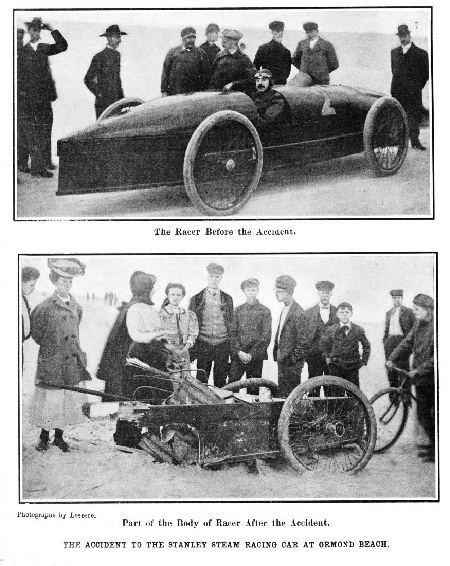Hello,
Quote:
Originally Posted by ttoyoda

A wing with a flat bottom may generate lift from the bottom, but that is only if it has a non-horizontal angle of attack.
The length of the air path is not relevant, even though that is the way many people explain it. Lift is caused by curvature of streamlines. In any curving streamline, the air pressure is lower on the inside of the curvature, and higher on the outside of the curvature.
|
I think that you are misreading the paper. If it was only the angle of attack, then all wings would push the airplane down to the ground, since the top is angled more than the bottom. Also, increasing the angle of attack increases drag.
It is the low pressure developed above the wing (car), and the higher pressure developed below the wing (car) that lifts it.
Think of the Stanley Steamer that set the land speed record on the beach in Florida: it flew up into the air! It's bottom was virtually flat, and there was no real angle of attack, either:

Obviously, 120+mph is faster than we're contemplating, but the principles are the same.